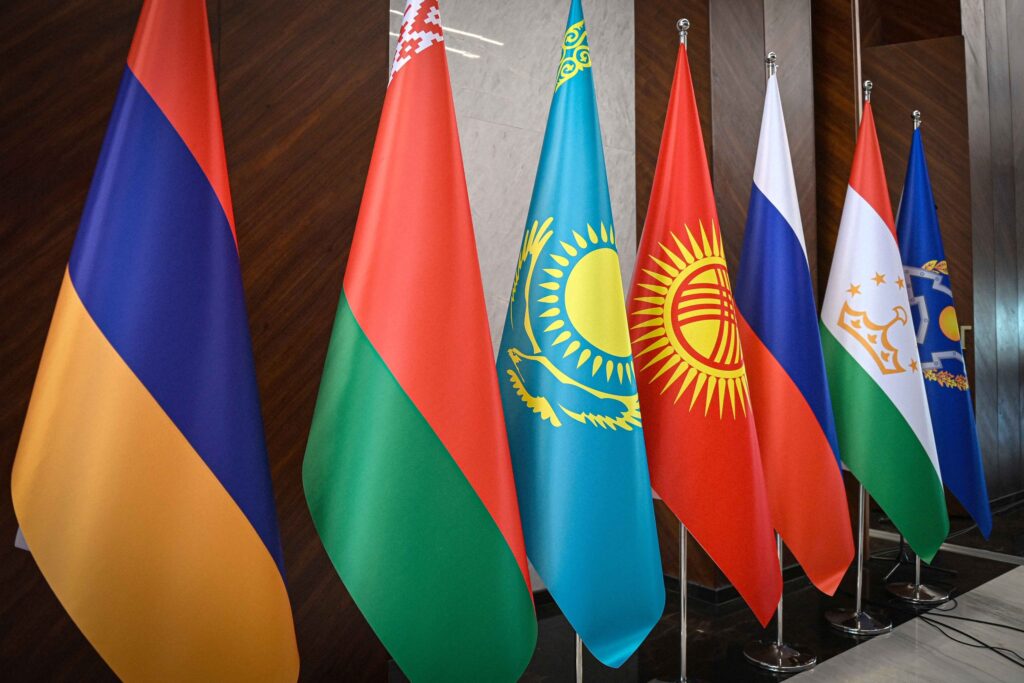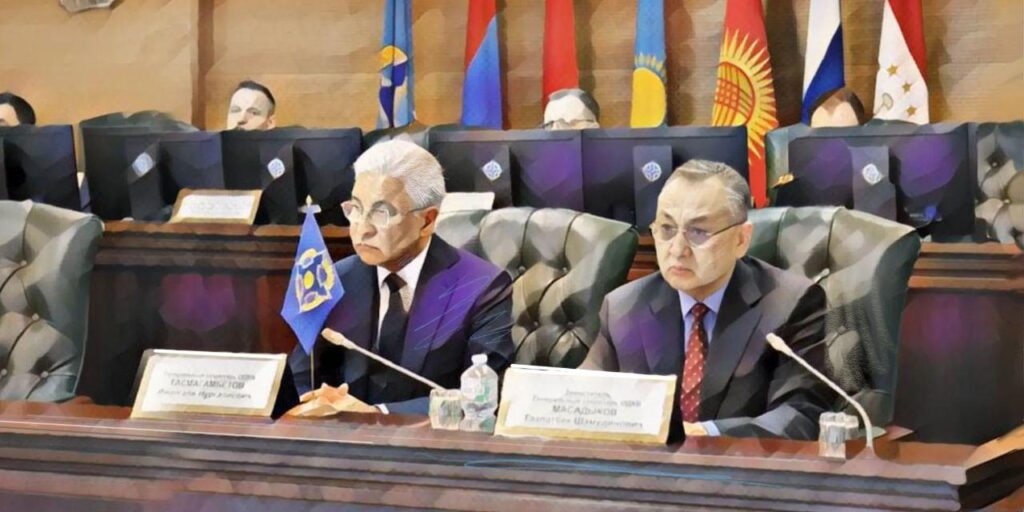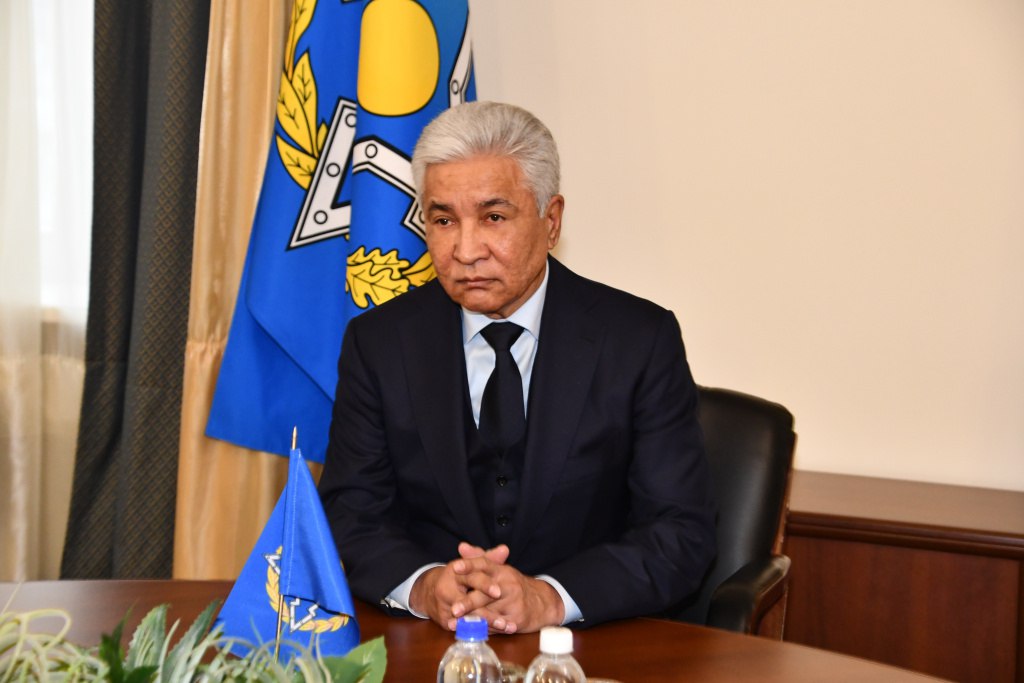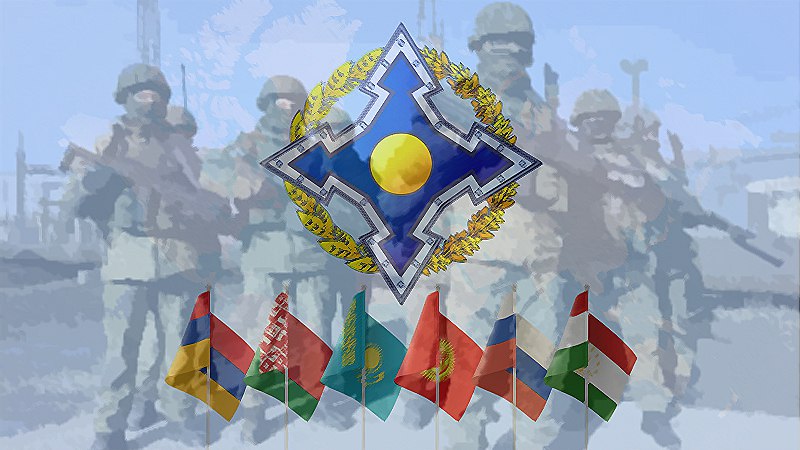Accompanied by a picture of military hardware – though in reverse gear as if symbolically – today, the CSTO (Collective Security Treaty Organization) website announced that “From 26 to 30 September, formations participating in the command-staff exercise ‘Unbreakable Brotherhood-2024’ with the CSTO Peacekeeping Forces are regrouping in the Republic of Kazakhstan. Contingents of CSTO troops are being sent from the Republic of Belarus, the Kyrgyz Republic, the Russian Federation, and the Republic of Tajikistan to the exercise area in accordance with the plan.”
In reality, the history of the CSTO is one of refusals, inaction, and sometimes unexpected successes.
On August 31, Armenia announced it had frozen its participation in the CSTO. Prime Minister Nikol Pashinyan said he would not name the day when Armenia would leave the CSTO and called the decision to freeze the republic’s participation in all structures of the organization correct “at this stage.” In many ways, this half-hearted decision reflects a certain amorphousness that originally characterized the CSTO.
History
The history of the structure’s emergence reflects this lack of crystalline form. The Collective Security Treaty (CST) was signed in Tashkent between Armenia, Kazakhstan, Kyrgyzstan, Russia, Tajikistan and Uzbekistan on May 15, 1992. Azerbaijan, Belarus and Georgia later joined in 1993. The treaty came into effect in 1994 and was set to last five years.
During the 1990s and the disintegration of Soviet-era institutions, organizations such as the CSTO or the previously created Commonwealth of Independent States (CIS), whose founding protocol was signed in Almaty, were created to facilitate a smooth “divorce” between the newly independent states. The CSTO was also seen as a force capable of curbing the regional conflicts which were boiling over, such as the Mujaheddin in Afghanistan. Tashkent’s bet on Russian weapons in case of conflicts with the Taliban did not work out, however. From the turn of the 1990s into the 2000s, two serious fissures across the borders of Uzbekistan and Kyrgyzstan took place; the republics fought back with their own military and weapons, in addition to Kazakhstan coming to the rescue.
The Collective Security Treaty expired in 1999, with Uzbekistan, Azerbaijan, and Georgia withdrawing, whilst Armenia, Belarus, Kazakhstan, Kyrgyzstan, Russia, and Tajikistan soldiered on under a new pact. The remaining states later transformed the CST into the Collective Security Treaty Organization in 2002. Uzbekistan joined as a full member of the CSTO in 2006 but then flip-flopped and suspended its membership in 2012.
A powerless organization
While the CSTO was still developing, with President Vladimir Putin coming to power in Russia, the Kremlin’s foreign policy changed substantively from that of the Yeltsin era, when Moscow remained indifferent to Nursultan Nazarbayev’s integration initiatives. The new direction of Russian foreign policy was expressed in the concepts of “Russia rising from its knees” and the “gathering of lands.” Over time, this evolved into joint war games and military operations with the West in the Middle East and Africa, and for a period the Kremlin seemed to lose interest in Central Asia.
This is probably why in 2010, when a second revolution in Kyrgyzstan turned into an outright massacre in the Uzbek enclaves around Osh and interim President Roza Otunbayeva called on the Kremlin and the CSTO to bring in troops to restore order, her request was flatly ignored. Tashkent, having failed to receive any justice for the Uzbeks in Kyrgyzstan who suffered massively in those events, suspended its membership in the CSTO and has not resumed it to this day.
The position of the CSTO was also criticized by Belarusian President Alexander Lukashenko, who a year earlier refused to sign an agreement between CSTO member states on the creation of the Collective Rapid Reaction Force (CRRF). At that time, relations between Moscow and Minsk were going through a rough period due to the so-called “milk war,” when dairy products from Belarus fell under the ban on imports into Russia. It was believed that the Kremlin implemented this ban to induce Lukashenko to resign as president of Belarus. At that time, Russia was headed by Dmitry Medvedev, for whom Lukashenko seen as an “inconvenient partner.”
In the same year, Medvedev attempted to persuade Viktor Yanukovych, then president of Ukraine, to join the CSTO, but this staunch Russian ally refused the overtures.
Article 4
It wasn’t until January 2022 that the CSTO proved itself as a structure capable of stopping the escalation of violence and helping to restore constitutional order. This happened during Qantar (Bloody January) in Kazakhstan, which, according to the official narrative, was the result of an attempted coup d’état.
As the violence escalated, Kazakh President Kassym-Jomart Tokayev appealed to the CSTO for support, referring to Article 4 of the Collective Security Treaty which reads: “If one of the participating States is subjected to aggression (armed attack threatening security, stability, territorial integrity, and sovereignty), it will be considered by the participating States as aggression against all the participating States of this Treaty. In the event of aggression against any of the States Parties, all other States Parties shall, at the request of that State Party, immediately provide the necessary assistance, including military assistance, as well as support with means at their disposal in the exercise of the right of collective defense in accordance with Article 51 of the UN Charter.”
The peacekeeping troops that arrived in Kazakhstan did not engage in direct confrontation with protesters and criminal elements, however, instead guarding strategically important facilities. They were deployed primarily in Almaty and Astana, the capital of Kazakhstan, freeing up police and military forces to restore order. During the entire time they were in the country, sentiments such as “Russia is here for the long haul” were often fostered, but at the end of the mission, CSTO peacekeeping forces left Kazakhstan in an orderly manner. and as early as February of that same year there was not even the slightest hint of interest in engaging when Russian troops were sent on their so-called “Special Military Operation” in Ukraine.
Kursk anomaly
In terms of the Russia-Ukraine conflict, which Central Asian governments have commented on in terms of “a bad peace [being] better than a good war,” it is important to discuss a recent episode in this military misadventure which directly relates to the CSTO and Article 4’s pledge for member states to help each other in case of violation of territorial integrity and threats to sovereignty.
The reason for the invasion of Ukraine was repeatedly referred to by Vladimir Putin as being a preventive measure in response to threats to its sovereignty. From this stance, there are vague grounds for Russia inviting CSTO allies to participate in the race across Ukraine. However, this year, there has been a counter-invasion of Russia itself, with the occupation of territories in the Kursk region, which has now been ongoing for more than a month. Even in this case, however, Russia has not called upon its CSTO colleagues for assistance.
Obviously, the Kremlin understands that such a request would lead to the end of the organization and thus dispel the the last illusion of Russia’s military influence in the region faster than any other action or inaction it is currently taking.









